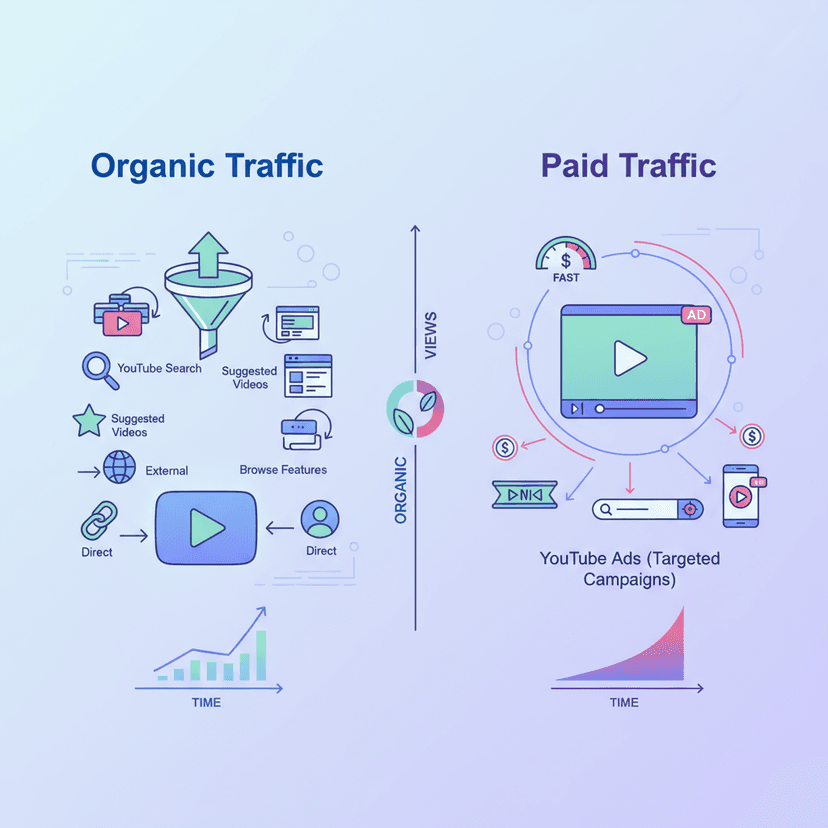Have you ever heard the saying “a website is the first salesperson”? Because a website is a space to provide all the details related to a company and is one of the easiest factors to attract potential customers. In other words, a website is like one of the company’s employees. Just like training employees, a website should be improved and its performance evaluated regularly over time. And if changes are necessary, don’t hesitate to consider redesigning the website to respond to existing problems immediately.
On average, companies around the world start redesigning their websites every two to three years. Of course, redesigning a website can help increase rankings in search engines. However, don’t forget that redesigning a website isn’t just about advantages. A poorly designed website can have serious consequences, such as loss of web traffic. Therefore, in this article, Relevant Audience will introduce 8 steps that, if followed, will ensure that this website redesign won’t negatively affect your SEO search ranking.
Step 1: Design the Website on a Temporary URL / Test Site
The first step in the website redesign process is to test designing the website on a temporary URL. For example, if the website is a CMS format like WordPress, you can easily create a backup website on another Domain Name. However, if the website is a custom CMS format, it is necessary to create a subfolder first to serve as a space for designing the new website.
Designing the website on a temporary URL will help prevent modifications or adjustments to the new website from affecting the current website being used. It can also be used as a space to test new functions that may be added to the new website.
Step 2: Evaluate the Advantages and Disadvantages of the Old Website
How can you know what needs to be improved or what is good on the website and you don’t want to lose when designing a new website? Of course, thoroughly checking the old website pages is one important thing before starting to design a new website. This allows you to identify which components help increase the opportunity to attract user visits or what is on the website that may negatively affect the user experience. To ensure that these components are corrected and not passed on to the new website. For example, problems that may affect SEO in website design include:
Step 3: Using NO Index on a Temporary URL / Test Site
One of the biggest mistakes in website redesign is not using Robots Meta Tags, such as the “No Index Tag” function. The importance of this “No Index Tag” function is to prevent the newly designed website pages from appearing on Search Engines. Of course, a website that has not been adjusted to comply with SEO principles will negatively affect page ranking if anyone accidentally accesses the incomplete website.
Step 4: Start Designing the New Website
After using the No Index Tag function, you can start designing the new website without worrying about problems related to SEO ranking. However, make sure to adjust it to be appropriate for the correct SEO principles at every stage. For example, if there is a plan to change the URL and the old website has a good Backlink Profile, how will you plan to do a 301 Redirect to preserve this Backlink Profile on the new website? If you want to avoid the hassle of the SEO process, it is recommended to consult with an experienced SEO specialist to reduce future problems.
Step 5: Test the Website
Once the website design is complete and the website is adjusted to comply with SEO principles, it’s time to gather various insights about the website to fix any errors that may occur during the website design process. One of the tools that SEO professionals should be familiar with is Screaming Frog, which is used to check for various problems such as:
- Broken Links within the website
- Correctness of Page Titles
- Meta Descriptions
- Check the Redirect of the website
- Page Speed
This testing process may take from two to three days to two to three weeks, depending on the complexity of the website’s SEO process. Remember that launching a website that hasn’t been thoroughly checked may expose unexpected flaws and lead to serious consequences that are difficult to fix in the future.
Step 6: Redirect the Website
Another step that many people often neglect but is actually essential for website redesign is redirecting the website. Because of various reasons, such as files on web pages being deleted or domain names changing but wanting to use the same content, the problem is that even if we fix it on the website, the broken links still remain on Google. When someone accesses the website but encounters a link that is old, it results in a 404 Error or 401 Error, which can annoy users and may negatively affect the website in the long run.
Step 7: Don’t Forget to Update XML Sitemaps
If you imagine a website as a book, an XMLSitemap is like a table of contents in the book, telling you how many chapters the book has and what each chapter is called. Creating an XML Sitemap is an important step in website design because it provides an overview of the entire website structure. Updating the XML Sitemap is also an important part of website redesign as it tells Google Search Bot which pages have changed or been deleted. The method for updating the XML Sitemap is not complicated if you use WordPress. Simply install the Yoast SEO Plugin and then you can use this plugin to create a website sitemap and update the information as needed.
Step 8: Check Everything Again
Once you have followed all the steps, it’s time to launch the new website on the SERP. However, don’t forget to check everything again to avoid problems. But don’t worry if minor problems arise, as it is normal in website development. Just make sure to constantly monitor and improve the overall performance of the website.
Get SEO Consulting from Relevant Audience
Relevant Audience is a Digital Performance Marketing Agency that aims to provide digital marketing services to businesses to reach target audiences looking for products or services at the right time, place, and device through online channels. Our services cover Search Marketing, Social Media Ads, Search Ads, and SEO (Search Engine Optimization) to Influencer Marketing and are also part of the Google Partners program.
Inquire for more information Tel: 02-038-5055 Email: info@relevantaudience.com Website: www.relevantaudience.com






